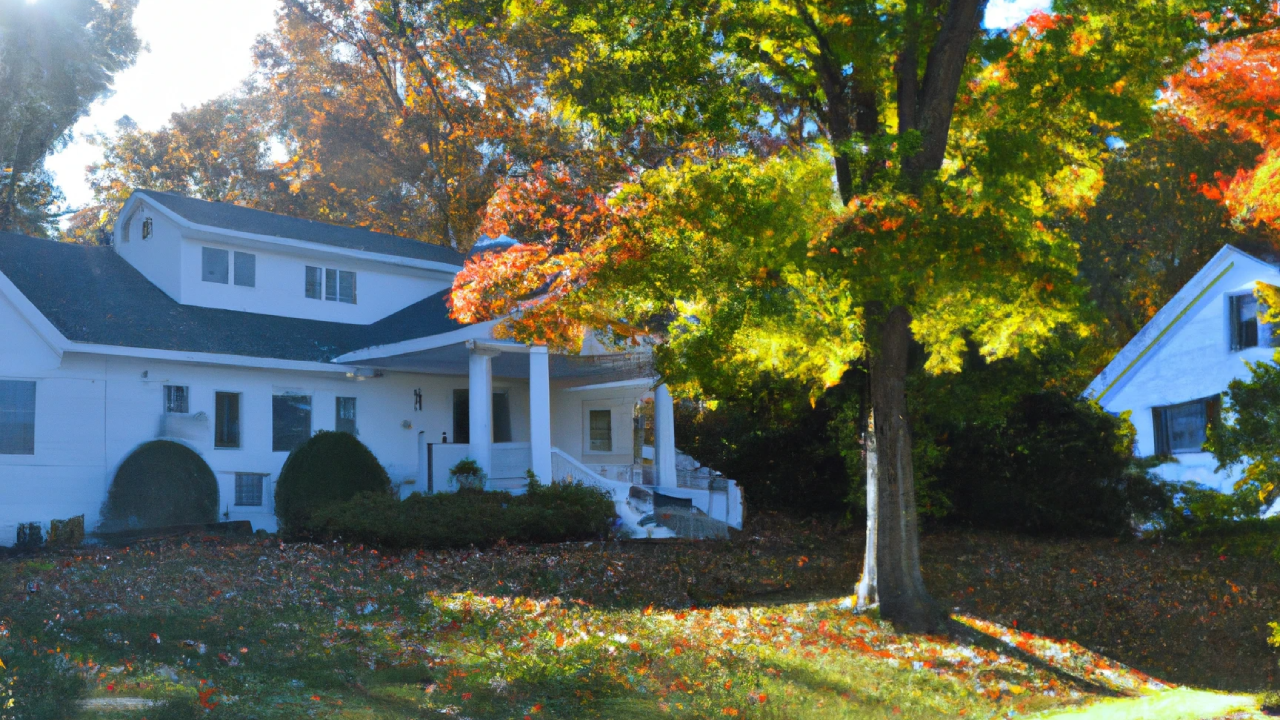Key takeaways
- Single-family homes, like ranch-style homes and townhomes, are designed and built for one family to occupy.
- Multi-family homes, like duplexes and apartment complexes, contain multiple living units, each with their own address, entrance and living facilities.
- Both single- and multi-family homes can function as investment properties, but there are financing requirements you’ll need to meet as well as local laws and regulations that may limit how much rent you can charge.
When it comes to buying a home, you’re probably thinking about the neighborhood, the number of bedrooms, how tasteful the finishes are and whether or not the price makes sense to you.
But there’s something more fundamental to consider: Whether you want an actual detached residence, or a set of rooms within a larger building. Or, as the real estate pros say, a single-family or a multi-family home.
While the freestanding house fits in more with the American Dream, owning a property with multiple living units — one that you can live in and others that you can rent out — has some advantages. There are plenty out there, too: Around 29 percent of the housing inventory in the U.S. falls under the multi-family bucket, although dense urban areas like New York and Boston have a much higher share. From design to zoning to financing, here’s a rundown of what the major differences are between a single-family home and a multi-family home.
What is a single-family home?
A single-family home is a freestanding residential unit that is designed and built for one family. To be considered a single-family home, the property should also be an individually owned lot or parcel separate from other dwellings in the area.
This is true even if the underlying land is fractional. Take a townhouse, for example. Even though it may be attached to other dwellings, it is built on its own section of property, according to the United States Census Bureau. This is reflected in the title of the property, which denotes when a piece of real estate has land attached or not.
There are many different types and styles of single-family homes, including:
- Ranch
- Split-level
- Manufactured
- Bungalow
- Townhouse
- Twin home
What is a multi-family home?
A multi-family home is a residential dwelling that includes more than one living unit. The difference between the multiple units is defined by each having a separate entrance, living facilities (kitchen, bathroom) and utilities. Each has its own address, too.
Multi-family properties allow each inhabitant to live a separate life. They’re not dependent on the other to set the temperature on the heating unit, nor will they share a utility bill. The different dwellings can be stacked on top of or to the side of one another. However, they share interior walls, ceilings and floors.
Multi-family housing also typically has common facilities, such as a basement, an attic, elevators or stairs, or a garage. They may also have common amenities like outdoor spaces, a pool, fitness facility, or playground. There are many different types of multi-family properties, including:
- Duplexes, triplexes and fourplexes
- Apartment complexes
- Condos
- Co-ops
- Age-restricted property (think 55+ communities)
- Assisted living centers
- Row houses (characterized by shared walls running from the base to the roof of each dwelling)
Single-family vs. multi-family homes: Key differences
While the obvious main difference between a single-family and multi-family home is that multiple families are legally allowed to live in the latter, there are some other distinguishing factors.
Separation of living facilities
In a single-family home, all the systems that run the home are independent and autonomous from other homes nearby. A multi-family home has separate utility meters and entrances. There are also separate plumbing and HVAC fixtures and outlets for each of the units, but the units all make use of the same systems and facilities (furnace, water tank, etc.) Communal areas for multi-family properties are common, too.
Legal distinctions
Single-family homes are considered residential real estate. Multi-family homes can be considered residential or commercial real estate: Smaller multi-family homes are those with four or fewer units and are considered residential property; commercial multi-family property has five or more units. The definition can be significant for several reasons, including zoning and financing (see below).
Zoning regulations
Through their zoning laws, cities may restrict where commercial properties in general, and multi-family properties in particular, can be built. Single-family home zoning may also be restrictive, especially if you want to use the home as a short-term rental or build an ADU (accessory dwelling unit) on your land.
Some municipalities have banned short-term rentals or ADUs altogether, although some markets such as Chicago have begun piloting new programs to increase the availability of ADUs in an effort to expand affordable housing inventory.
Financing
Financing is different for multi-family homes depending on how many units there are. A conventional loan can be used when investing in a property with four or fewer units, whether it’s a single-family or multi-family home. In a multi-family property with more than four units, a commercial loan must be utilized. Commercial mortgages have different terms than residential mortgages do.
For lending purposes, a property that has between one and four units can be financed as a single-family home. If one of the units is lived in by the owner, it can also be financed as an owner-occupied single-family home, which can grant borrowers very favorable terms and interest rates.
Learn more: Can you buy a house with cash? Is it smart?
Loan limits
Single-family properties that are financed with a conforming loan are subject to the 2025 federal limit of $806,500 in most areas and more than $1.2 million in high-cost areas. A mortgage for more than this amount would require a jumbo loan or a piggyback mortgage.
Financing for multi-family properties is evaluated on a case-by-case basis. Often, the mortgage terms are based not so much on the value of the property itself, as is the case with single-family houses, but on the rental income generated by the tenants living in the building.
Investing in a single-family or multi-family home
Both single- and multi-family homes can function as investment properties. In fact, multi-family dwellings usually do function as investments — a source of income and property appreciation — for their owners, even if they live on-site in a unit as well.
While there are unique differences that separate single-family and multi-family properties, if you’re thinking about investing, there is one common attribute to consider: The maximum amount you can charge to let someone rent it out. If you’re planning to use either type of property as a short-term rental, you’ll want to carefully consider when you’ll plan to use it for yourself and when you’ll want to rent it to out-of-towners.
When it comes to deciding which to invest in, Erin Sykes, a founding partner of SYKES Properties says, “Depending on size, [a] multi-family may be better for a more experienced investor. If there are multiple tenants, you would need experience in managing those relationships, collections, maintenance of the property and turnover.”
In contrast, renting out single-family homes can be simpler — especially if it’s a part-time arrangement or vacation-home sort of situation. Sykes says, “Single-family home investment is ideal for a location where there is seasonality and thus a strong rental market (think Palm Beach, the Hamptons, Jersey Shore). Thus, you can charge a premium for the shore rental season and then live in the property during the extended offseason.”
Single-family vs. multi-family homes: Pros and cons
Single-family homes
Pros
- More privacy and space
- More autonomy, ability to customize
- Easier for novice investors
Cons
- More expensive (than comparable multi-family home)
- Complete responsibility for repairs, maintenance
- Not as much rental income potential
Multi-family homes
Pros
- Cheaper than comparable single-family home
- Less responsibility for property upkeep
- Can live in one unit and rent out the others
Cons
- Less space and privacy; must share facilities
- Landlord duties
- Management costs, expenses
Final word on single-family vs multi-family homes
A single-family home is the quintessential American Dream House, complete with a big yard and lots of rooms. But other folks — especially singles, childless couples and empty nesters — might prefer multi-family home life and its communal set-up.
If you’re struggling to determine the best pick, it’s wise to speak with a real estate agent to get a sense of the local market. An experienced agent will be able to help you gauge the neighborhoods with the most affordable single-family properties vs. the areas that might attract more renters — and more income if you decide to go the multi-family route.
When it comes to investing, a large multi-family property will likely cost more upfront to purchase and maintain, but the potential for cash flow and property appreciation is also much greater. By purchasing real estate with more than one unit, there’s a strong possibility that the rental side of the multi-family home can help or completely cover the costs of the mortgage.
A multi-family property can also serve two purposes: as a residence for the owner (and/or other relatives), as well as a business. Ultimately, deciding between the two different property classes is a matter of what your goals are and what makes the most sense for you, your lifestyle and your finances.
Additional reporting by Alene Laney
Why we ask for feedback
Your feedback helps us improve our content and services. It takes less than a minute to
complete.
Your responses are anonymous and will only be used for improving our website.
Help us improve our content
Read the full article here
















